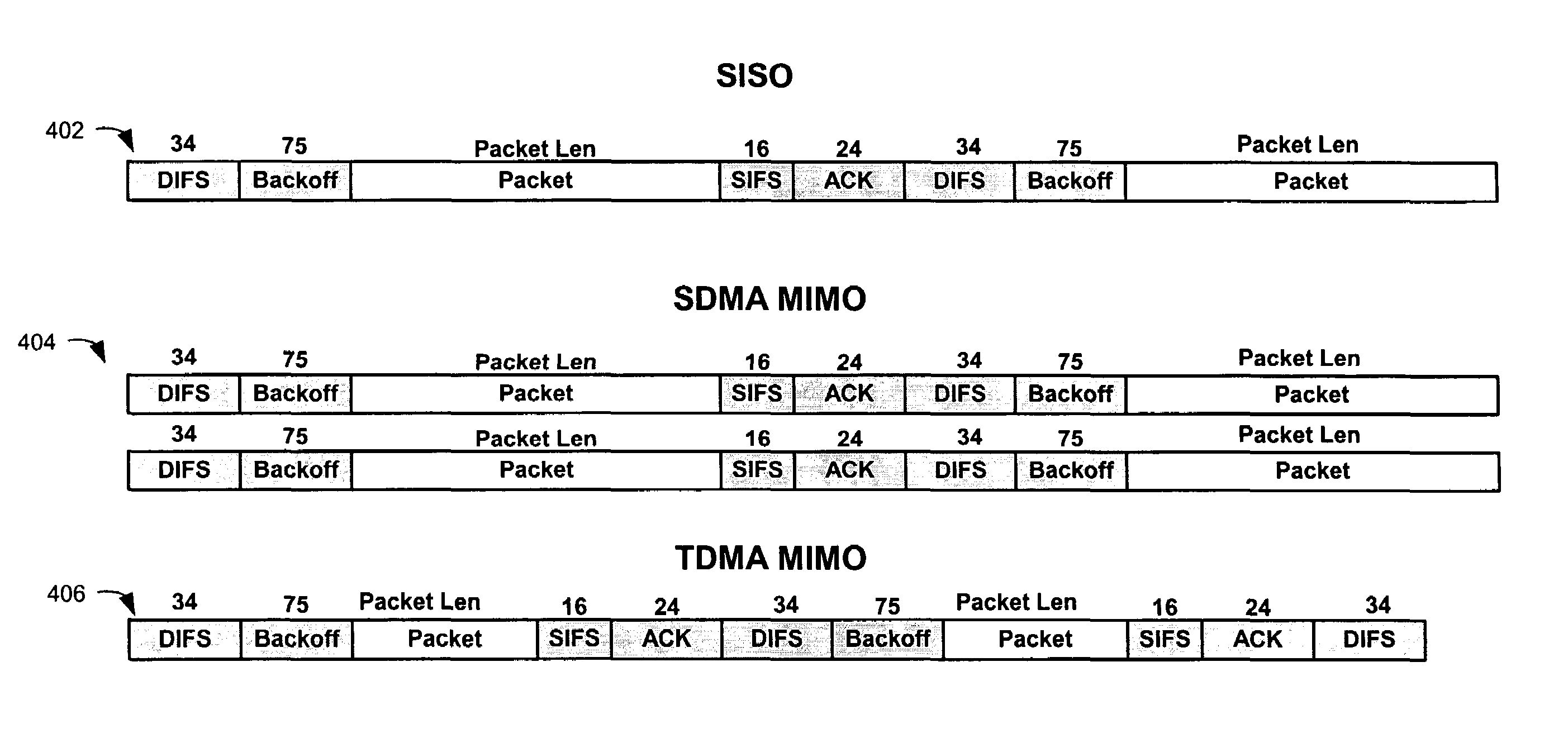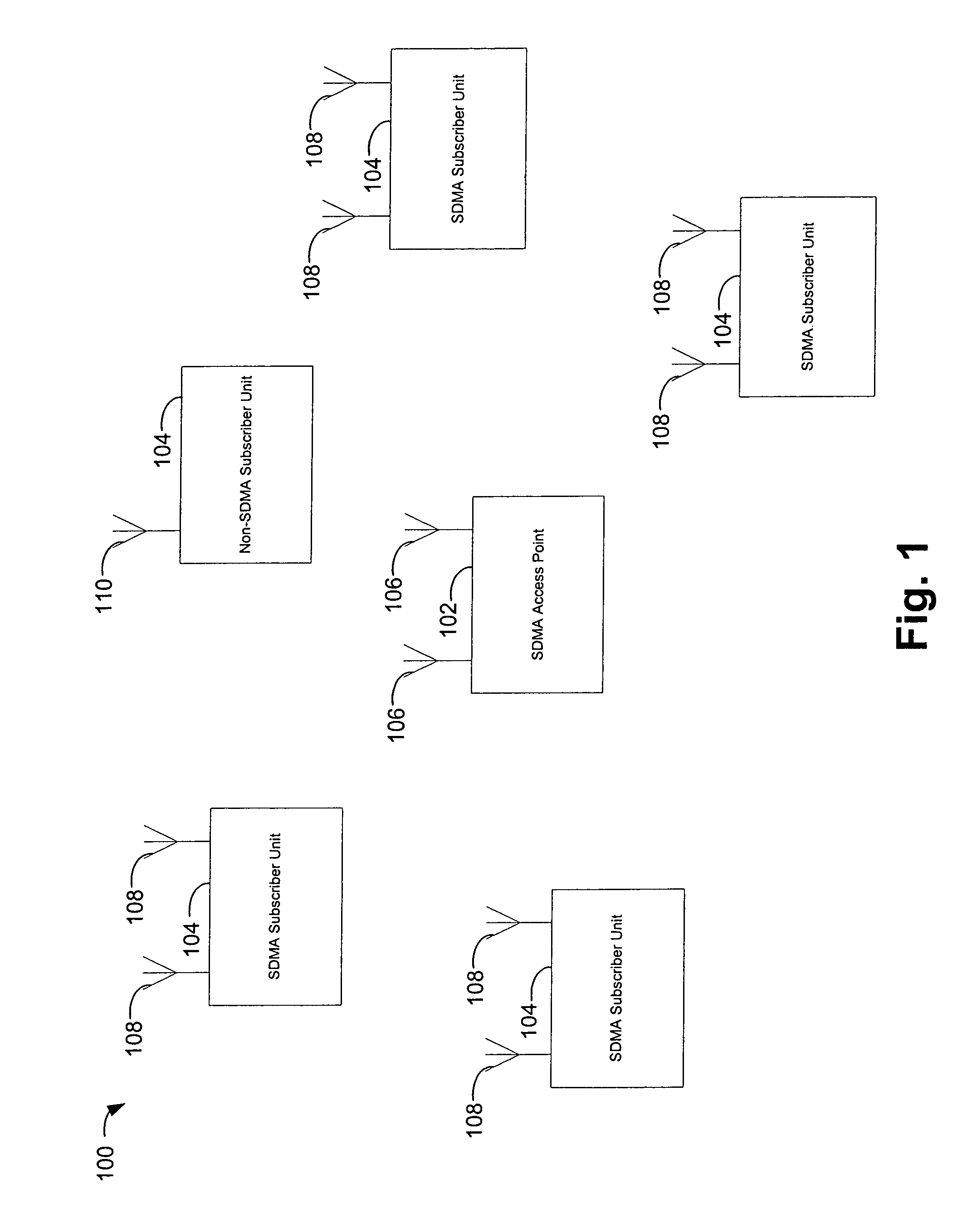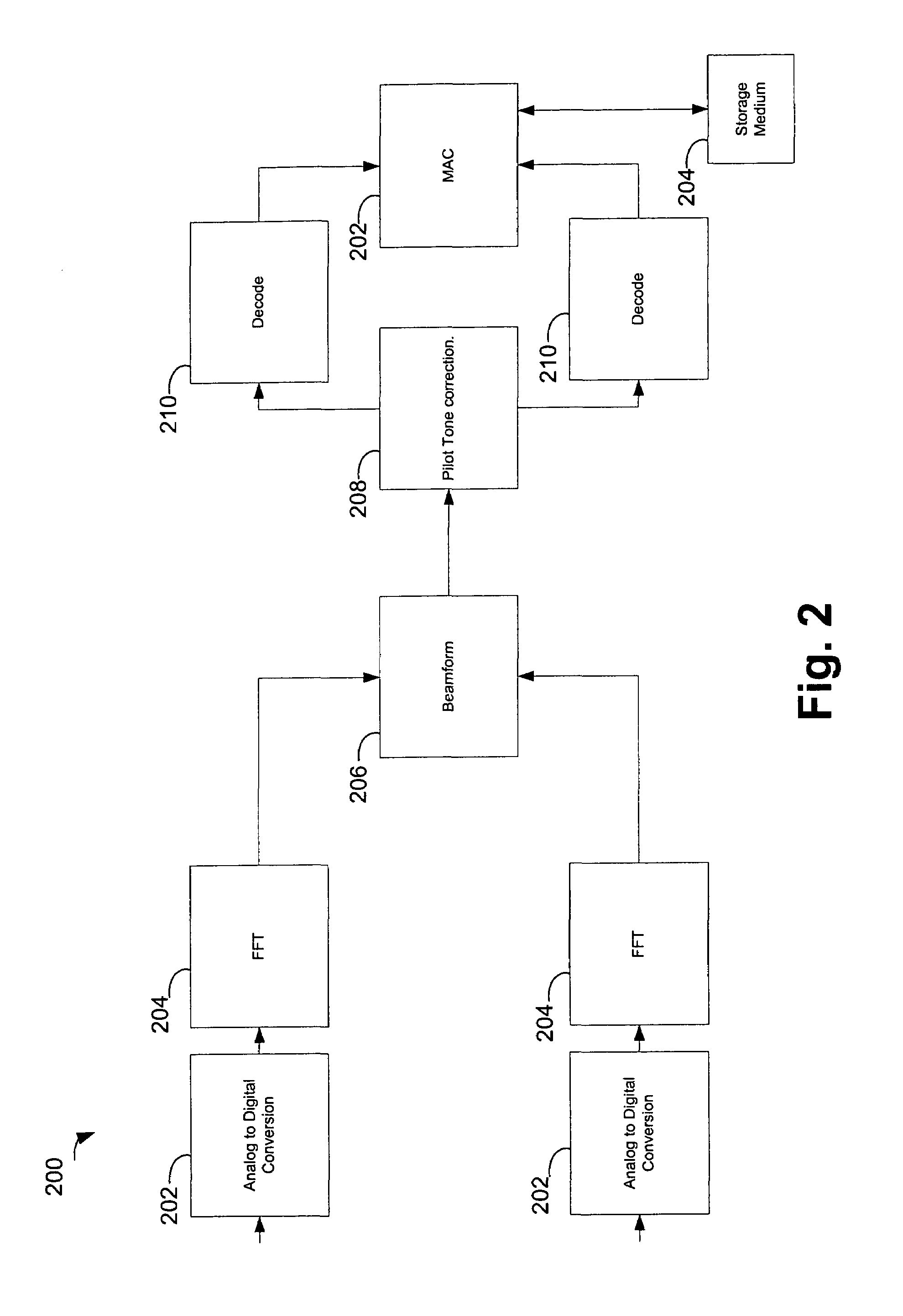Spatial division multiple access for wireless networks
a wireless network and spatial division technology, applied in the field of communication, can solve problems such as packet collisions, and achieve the effect of increasing system capacity, doubling or quadrupling network throughpu
- Summary
- Abstract
- Description
- Claims
- Application Information
AI Technical Summary
Benefits of technology
Problems solved by technology
Method used
Image
Examples
Embodiment Construction
[0030]Although having very broad applicability, the present invention will be described with reference to a representative network environment, a wireless communication network based on the IEEE 802.11 standard, and in one particular implementation, the IEEE 802.11a standard. The IEEE 802.11g standard is considered to be highly similar to the 802.11a standard in many relevant respects and wherever the present application refers to the 802.11a standard, it will be understood that this encompasses the 802.11g standard as well. Also, it will be appreciated that the present invention may also be implemented in conjunction with the 802.11e standard that provides various MAC layer enhancements. The technical details of these standards are well-known to those of skill in the art and familiarity with them will be assumed in the discussion that follows. Relevant descriptive materials regarding the IEEE 802.11 standards may be found in the following documents:
[0031]Information technology—Tele...
PUM
 Login to View More
Login to View More Abstract
Description
Claims
Application Information
 Login to View More
Login to View More - R&D
- Intellectual Property
- Life Sciences
- Materials
- Tech Scout
- Unparalleled Data Quality
- Higher Quality Content
- 60% Fewer Hallucinations
Browse by: Latest US Patents, China's latest patents, Technical Efficacy Thesaurus, Application Domain, Technology Topic, Popular Technical Reports.
© 2025 PatSnap. All rights reserved.Legal|Privacy policy|Modern Slavery Act Transparency Statement|Sitemap|About US| Contact US: help@patsnap.com



